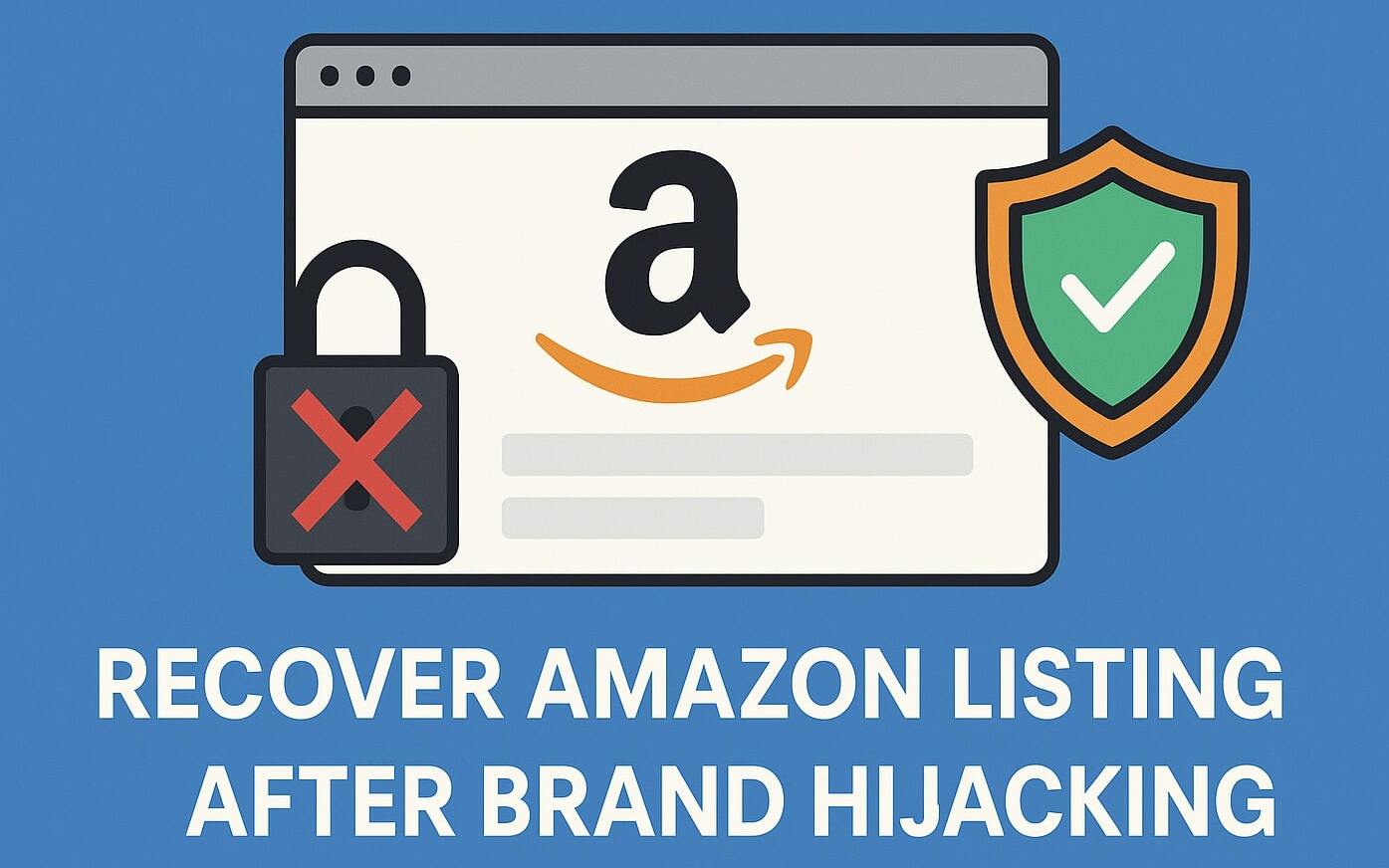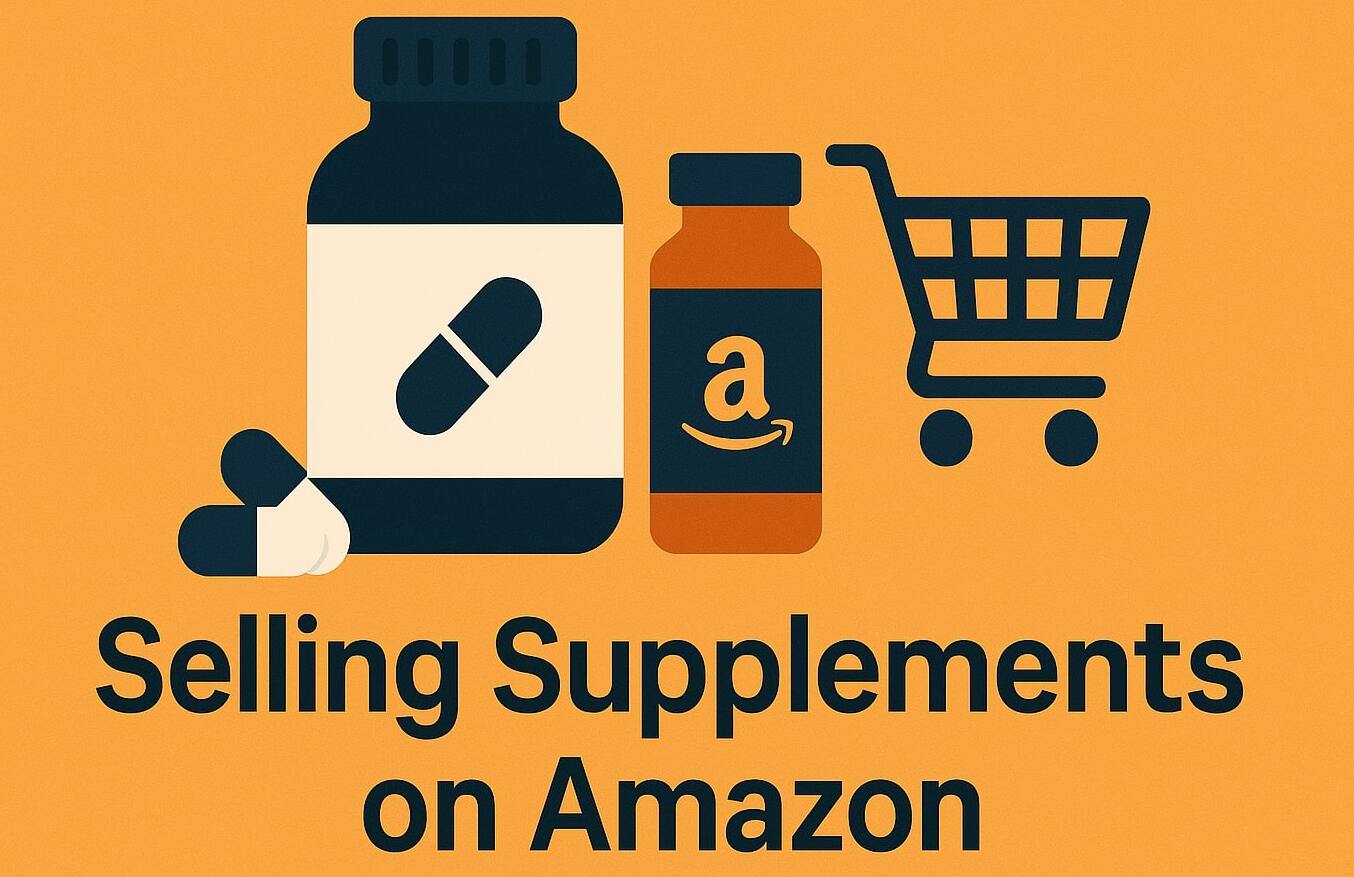Article written by the team at Seller Candy
Amazon listing hijacking can be quite frustrating for sellers who have invested significant time and resources into building their brand and optimizing their product listings. In simple terms, listing hijacking occurs when another seller takes control of your Amazon product listing without your permission.
Is Your Amazon Store Reaching Its Full Potential?
Discover hidden opportunities, reduce wasted spend, and boost your sales with a free expert audit.
Our team will analyze your listings, ad performance, and overall account health to uncover exactly what’s working—and what’s holding you back. You’ll get a tailored blueprint to scale smarter, not harder.
Get a Free AuditWhat Qualifies As Hijacking
Listing hijacking can occur in various ways, but the most common method is through seller fraud. This happens when a fraudulent seller creates a counterfeit version of your product or claims to be selling the same item at a lower price.
Another way listing hijacking can happen is through unauthorized third-party access to your Amazon account. Hackers may gain access to your login information and make changes to your product listing without you realizing it.
Difference Between Legitimate Resellers And Hijackers
Legitimate resellers operate within the boundaries of brand agreements, selling authentic products sourced directly from the manufacturer or authorized distributors. They align with the brand’s pricing, quality standards, and customer experience expectations.
On the other hand, hijackers are unauthorized sellers who disrupt listings by offering counterfeit, stolen, or unrelated products. Unlike legitimate resellers, hijackers often undercut prices and compromise the integrity of the brand, leading to poor customer experiences and potential damage to the brand’s reputation.
How Hijackers Exploit Popular Listings To Sell Counterfeit Or Unrelated Products
Hijackers target high-performing listings with significant traffic and strong reviews. By listing their counterfeit or unrelated products under these popular listings, they take advantage of the brand’s established credibility.
Customers who expect to receive the original product may unknowingly purchase low-quality or fake items instead. Hijackers often price their products lower than the original seller to attract buyers, creating confusion and devaluing the product. This practice not only harms the brand’s image but also erodes customer trust over time.
How It Affects Your Business
Losing The Buy Box
Negative Reviews From Customers Receiving Counterfeit Goods
Long-Term Impact On Brand Trust And Sales
Revenue Loss: Every sale a hijacker makes is a direct hit to your profits—a theft of both income and potential customer loyalty.
Damaged Reputation: Negative reviews stemming from subpar product experiences can tarnish your brand’s image swiftly. A single star lost can deter countless shoppers, affecting not just one but all of your listings.
How To Identify A Hijacked Listing
Beware of listing hijackers—those unauthorized sellers peddling counterfeit versions of your top products under your Amazon listing. Unlike legitimate resellers, these imposters dilute your brand with inferior knockoffs, undercutting prices and swiping sales right from under you.
Their offerings may mimic yours in appearance only; beyond that, they fall short. These low-quality counterfeits can outprice genuine items, luring away customers and eroding your hard-earned market position.
Detecting A Hijack
To spot a hijack early on, scrutinize the “Other Sellers on Amazon” section for unfamiliar names attached to your listing—it could be an alarm bell. While some might be bona fide resellers, others could signal trouble.
Analyze who owns the buy box too; if it’s been snatched by another seller without justification, raise the red flag. Lastly, monitor reviews like a hawk—they’re often where signs of poor quality surface first due to deceptive counterfeit goods infiltrating the marketplace.
Remember: Vigilance is key in protecting both sales and reputation against these stealthy intruders on Amazon’s vast selling platform.
Signs To Watch For
Here are some common issues that can impact your Amazon listing and how to address them:
Sudden Loss of Buy Box
Losing the Buy Box can drastically affect your sales. Check for pricing competition, stock levels, or policy violations to regain it quickly.
Unfamiliar Sellers on Your Listing
If unknown sellers appear on your listing, they could be reselling unauthorized or counterfeit products. Monitor and take action to protect your brand.
Sharp Price Drops
Unexpected price drops may indicate unauthorized sellers or aggressive competition. Investigate and adjust your pricing strategy accordingly.
Customer Complaints That Don’t Align with Your Product
Complaints unrelated to your product could suggest listing hijacking or counterfeit issues. Review and resolve them promptly to maintain trust.
Tools And Methods To Detect Hijackers
- Here are some essential strategies to ensure your product listings perform at their best:
Monitoring Software (e.g., FeedbackFive, SellerPulse)
Use specialized tools like FeedbackFive or SellerPulse to track performance, customer feedback, and key metrics automatically, saving time and ensuring accuracy.
Manual Listing Checks
Regularly review your product listings to identify errors, outdated information, or opportunities for optimization that software might miss.
Reading and Analyzing New Reviews
Stay on top of customer feedback by reading new reviews. This helps you understand customer needs, address concerns, and improve your product or service.
What To Do If Your Listing Is Hijacked
Unfortunately, Amazon listing hijacking happens. And if it does happen to you, you should be prepared to take action.
Step 1: Investigate And Document
Protecting your brand on Amazon starts with identifying and addressing counterfeit products effectively.
Identify the Hijacker’s Store Name, ASIN, and Product Listing
Start by locating the hijacker’s details, including their store name, ASIN, and the product listing they are using. This information is critical for building your case and reporting the issue to Amazon.
Order the Counterfeit Product to Gather Proof
Purchase the counterfeit product to collect evidence, such as photos, packaging details, and quality differences. This proof will help demonstrate the discrepancies and support your claim when you report the issue.
Step 2: Contact The Hijacker
Dealing with unauthorized sellers on Amazon? Here are two key steps to take:
Send a Cease and Desist Letter
Start by sending a formal cease and desist letter to the seller. This communicates that they are violating your rights and must stop their activities immediately. It’s a professional way to assert your position and begin resolving the issue.
Use Amazon’s Messaging System to Reach the Seller
Use Amazon’s internal messaging system to contact the seller directly. Politely explain the issue, provide necessary documentation, and request that they cease selling your products. This method keeps communication on the platform and helps ensure accountability.
Step 3: Report To Amazon
When managing your brand on online marketplaces, knowing how to address issues effectively is key.
How to Submit a Case with Seller Support
Submitting a case with Seller Support is straightforward but requires accuracy. Ensure you provide all relevant details upfront, including order information, issue specifics, and any supporting documentation, to expedite resolution.
Importance of Brand Ownership Proof (Especially if Enrolled in Brand Registry)
Proof of brand ownership is critical, especially for those in the Brand Registry program. It helps protect your intellectual property, prevents counterfeit activity, and ensures your claims are prioritized during disputes.
What Evidence to Include in Your Claim
When filing a claim, include clear and concise evidence such as invoices, product images, shipping details, and customer communication. Strong documentation increases your chances of a successful resolution.
Step 4: Follow Up
Dealing with domain hijacking can be challenging, but taking the right steps can help resolve the issue effectively.
Monitor Resolution
Keep a close eye on the situation after reporting the hijacking. Regularly check for updates from your domain registrar or hosting provider to ensure the issue is being addressed and your domain is restored securely.
Consider Legal Action If Hijacker Persists
If the hijacker refuses to release your domain or the issue remains unresolved, consult a lawyer with expertise in domain disputes. They can guide you through filing a legal claim and recovering your domain rights.
How To Prevent Future Hijackings
Fortunately, there are some things you can do to prevent future hijackings too, and following, we will dive into some of the most important actions you can take:
Enroll In Amazon Protection Programs
Amazon offers tools to help protect brands and ensure product authenticity.
Amazon Brand Registry
The Amazon Brand Registry helps businesses protect their intellectual property by giving them access to tools that detect and remove counterfeit listings, ensuring customers receive authentic products.
Amazon Transparency Program
The Amazon Transparency Program combats counterfeit products by assigning unique codes to each item, allowing customers to verify authenticity and build trust with the brand.
Secure Your Brand
Protecting your brand is key to standing out and building trust with your audience.
Get a Registered Trademark
Securing a trademark protects your brand name, logo, or tagline from being used by others. It gives you legal ownership and helps establish credibility in the marketplace.
Maintain Consistent Branding Across Platforms
Consistency builds recognition and trust. Use the same logo, colors, and tone across all platforms to create a cohesive and professional brand identity.
Monitor Proactively
Protecting your Amazon business requires proactive monitoring and the right tools to stay ahead.
Set Up Listing And Buy Box Alerts
Enable alerts to monitor your product listings and Buy Box status in real time. This ensures you can quickly address any unauthorized changes or pricing issues that could affect your sales.
Regularly Check Your Listings From A Customer’s Perspective
View your listings as your customers see them to catch errors, inconsistencies, or negative changes. This helps maintain your brand image and ensures accurate product information.
Use Third-Party Protection Tools
Leverage third-party tools to automate the process of tracking changes, identifying threats, and safeguarding your listings against unauthorized actions or counterfeit products.
Struggling to Scale on Amazon?
Get a free expert audit and uncover quick wins to boost sales and cut ad waste.
Get a Free AuditConclusion
The threat of listing hijacking looms large, a shadow that can tarnish your brand’s reputation and erode profits. Vigilance is paramount; safeguarding your business requires both foresight and constant attention.
Swift action is crucial in the face of hijacking—delay only deepens the harm to your brand. Yet, haste without strategy leads nowhere. When counterfeit listings emerge, every second counts.
In these trying moments, you’re not alone. Our seasoned team stands ready to dismantle any fraudulent listings with precision, fortifying your defenses for future peace of mind. Your focus should be on growth and innovation—not wrestling with Seller Support.
Prevention is key: Don’t wait for calamity to strike—fortify your Amazon presence today.
FAQs
Yes, if Amazon determines that a hijacker has violated its policies, such as selling counterfeit products, they can be permanently banned. However, consistent monitoring and reporting may be necessary to ensure action is taken.
The time varies, but it can take anywhere from a few days to a couple of weeks. Amazon often requires proof of ownership, brand registry, or evidence of policy violations before taking action.
A hijacker sells counterfeit or unauthorized versions of a product under your Amazon listing, often at lower prices. A reseller, on the other hand, is authorized to sell your product, typically buying it in bulk from you or a distributor.




